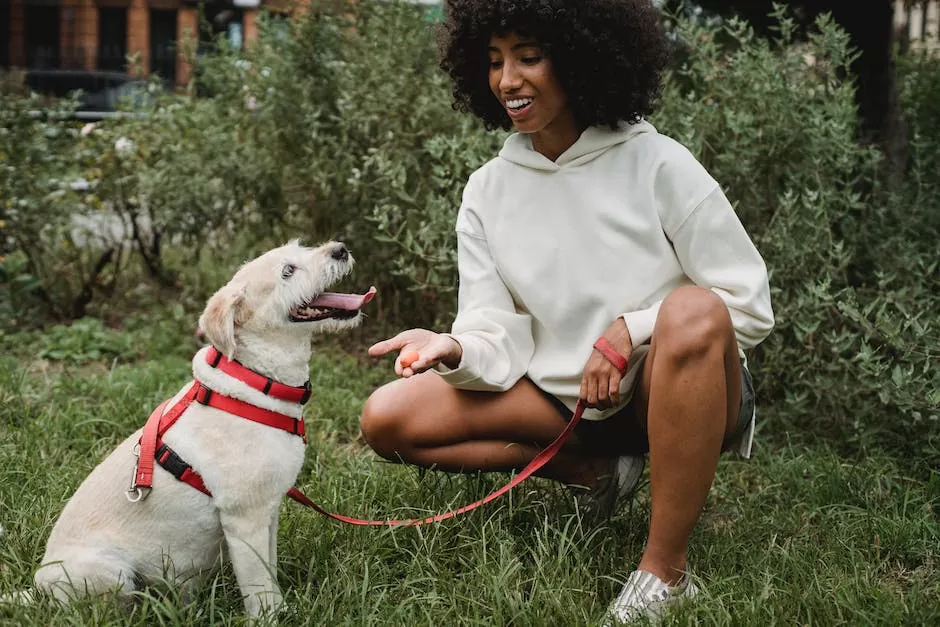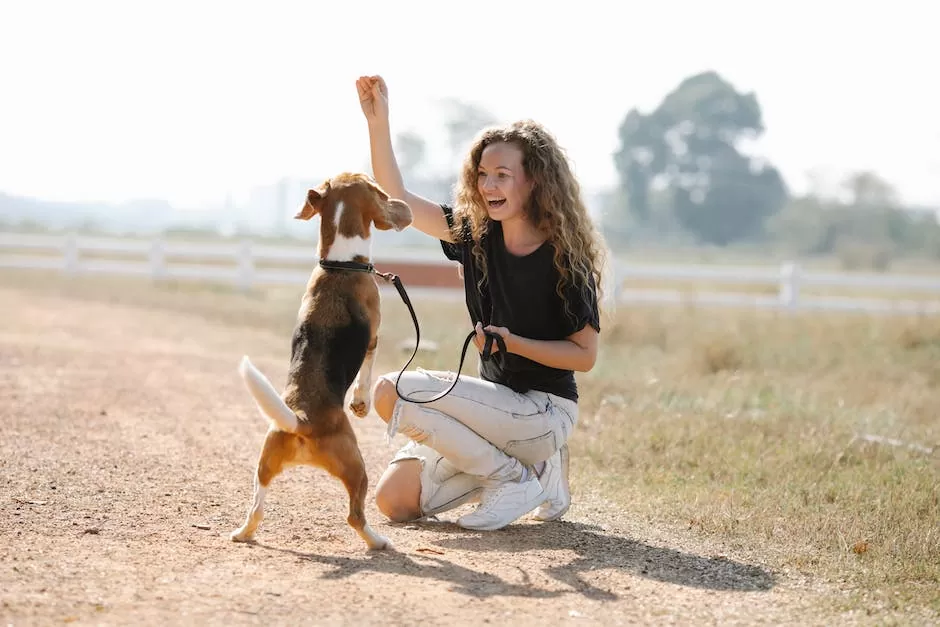What should you not teach your dog?

There are a few things you shouldn’t teach your dog, such as how to jump on people or how to beg for food. You also shouldn’t teach your dog tricks that require them to put their mouth on your body, such as giving kisses or shaking hands. Finally, avoid teaching your dog behaviors that could be considered dangerous, such as chasing cars or running off when they’re called.
There is no definitive answer to this question since different dogs will excel at different things and some owners may prefer to not have their dog learn certain behaviors. However, common suggestions for things that should not be taught to dogs include tricks that involve jumping or putting stress on their joints, behaviors that could be perceived as aggressive (such as biting or growling), and commands that could be Dangerous (such as ‘ come ‘ when called off of a busy street). Ultimately, it is important to consider what is safe and appropriate for both the individual dog and the owner’s lifestyle before decide what to teach them.
What is the hardest thing to train a dog to do?
The hardest part of dog training is often doing nothing. This is because it requires a great deal of patience and self-control to stand like a statue, not saying or doing anything, while your dog is behaving in a rowdy or foolish manner. If you are in a public setting when this occurs, it can be quite embarrassing. However, it is important to remain calm and not give in to your dog’s demands or behaviors in order to be successful in training.
While some tricks may not cause any problems, others like jumping, spinning in circles, high fives or hugs and kisses can create issues for you and your dog. If you are unsure about a trick, it is best to consult with a professional trainer to ensure that it is safe for your dog to perform.
What should you not train a dog
It’s important to avoid making common mistakes while training your dog, as this can lead to confusion and frustration for both you and your pet. Some of the most common mistakes include making training sessions too long, delivering treats too slowly, misplacing treat delivery, punishing desirable behavior, reinforcing unwanted behavior, and failing to teach a dog to generalize. Using only treats as a reinforcement can also be problematic, as dogs can become reliant on this form of reinforcement and may not respond to other forms of rewards. Finally, it’s important to be consistent with your cues and commands to avoid confusion.
1. Let’s start with the things we want to focus on doing:
2. Take baby steps
3. Be consistent
4. Use positive reinforcement methods
5. Seek help from a qualified professional for challenging behaviors
6. Don’t have your training sessions go longer than 20 minutes
7. Don’t start training someplace with a lot of distractions
What is the number 1 easiest dog to train?
There are a number of factors that go into how easily a dog can be trained, including intelligence, obedience, and natural instinct. However, some breeds are generally easier to work with than others. Here are nine of the easiest dogs to train:
1. Border collie: Border collies are extremely intelligent and have a natural instinct to work and please their owner. With the right training, they can be extremely obedient and easy to work with.
2. German shepherd: German shepherds are another intelligent breed that is naturally obedient and easy to train. They are loyal and protective, making them great guard dogs or working dogs.
3. Labrador retriever: Labrador retrievers are friendly, outgoing, and eager to please, making them one of the easiest breeds to train. They are also very intelligent and have a great working instinct.
4. Golden retriever: Golden retrievers are another friendly, outgoing breed that is easy to train. They are intelligent and have a strong working instinct, making them great for a variety of jobs.
5. Australian shepherd: Australian shepherds are intelligent, obedient, and easy to train. They are also very versatile, able to excel at a variety of jobs.
6
The most challenging time of raising a puppy is the adolescent period. Dogs become “teenagers” and seem to forget everything they have ever been taught. This period is individual to each dog, but it may begin when he’s about eight months old and continue until he’s two years old.
What sense do dogs hate?
While most dogs generally don’t enjoy the taste or smell of citrus fruits like oranges, lemons, and grapefruit, there can be some advantages to using their natural dislike of these fruits to your advantage. For example, if you’re training a dog to stay away from a particular area in your home or yard, you can place a citrus fruit like an orange peel in that area as a natural deterrent. The strong smell of the citrus will help to mask any other scents in the area and make it less appealing to your dog. Additionally, the taste of citrus is usually unpleasant to dogs, so if you have a dog that tends to chew on things, using citrus-flavored deterrents can help to discourage this behavior.
When you catch your dog chewing on something he shouldn’t be, quickly say “No!” and take the item away from him. Then, give him a different, pet parent-approved option to chew on like a chew toy. By doing this, you’ll help redirect your dog’s chewing behavior in a positive way.
What is the easiest thing to teach a dog
The “sit” command is one of the easiest tricks for a dog to learn and is the basis for many other simple tricks like “shake” and “stay”. To teach this trick, keep your foot on your dog’s leash, allowing them only a little room to move but not enough to jump up.
Dogs may not like hugs because they can feel trapped and vulnerable when someone they don’t know is holding them. They may also be stressed by the sudden invasion of their personal space. If you want to show your affection for a dog, try giving them a treat or petting them on the back instead of hugging them.
What dog behavior should not be ignored?
When you notice your dog exhibiting bad behavior, it’s important to not ignore it. Some behaviors, like nipping or pulling on leash, can be harmful to your dog or others if left unchecked. Any behavior that feels good to your dog, is naturally calming ( such as licking or chewing ), or is fun to do is not likely to go away when ignored. If you want to stop your dog’s bad behavior, it’s important to take action and not simply ignore the issue.
A well-behaved pup should respond to seven directions in order to become a good canine citizen: Sit, Down, Stay, Come, Heel, Off, and No. More specifically, each of these commands should be practiced until your pup can perform them consistently and with little to no variation. With patience and positive reinforcement, your pup will learn to respond to your commands and become a good canine citizen!
What are the 5 golden rules of dog training
Dog training requires time, patience and most importantly, consistency. Although there are various methods and techniques that you can use, there are some basic rules that remain the same regardless of what methods you employ. These five golden rules will help ensure that your dog training is enjoyable and successful!
1. Get to know your dog. In order to train your dog effectively, you need to understand how they think, feel and learn. This includes getting to know their individual personality and what motivates them.
2. Make it an enjoyable experience. If your dog is having fun, they will be more likely to learn and retain what you are teaching them. Use positive reinforcement such as treats, petting or praise to make training sessions a pleasant experience for your dog.
3. Consistency is vital to your training success. Dogs learn best through consistent and repetitive exposure to commands or behaviors. Once you have taught your dog something, be sure to reinforce it often so they don’t forget.
4. Learn when to call it a day. Dogs have a limited attention span, so it’s important to keep training sessions short and sweet. If you feel like your dog is no longer responding or is getting frustrated, take a break
This rule is a great way to socialize your puppy and expose them to new things in a controlled and safe way. By exposing them to different surfaces, toys, locations and people, they will learn how to be adaptable and comfortable in new environments. This will help them in the future when they need to be comfortable in new situations, such as going to the groomer or the vet.
How many hours a day should you train your dog?
This is definitely something to keep in mind when training your dog – shorter sessions are usually more successful than longer ones. If you find that your dog is becoming bored or frustrated during a training session, it’s probably best to end it then and there.Five minutes is really all you need – anything longer and you may start to lose your dog’s attention.
Some of the most well-behaved dog breeds include: Irish Setters, Labrador Retrievers, Border Collies, Leonbergers, Newfoundland dogs, St Bernard, Beagles. These breeds are known for being intelligent, good natured, and easy to train.
Final Words
Some people believe that dogs should not be taught tricks or manners, as it purportedly goes against their nature. Other people believe that all dogs should be taught tricks or manners regardless of their breed or personality. There is no correct answer, and ultimately it is up to the owner to decide what is best for their dog.
There are a few things that you should not teach your dog, such as aggression, biting, and chewing. These are all negative behaviors that can be harmful to both your dog and others.